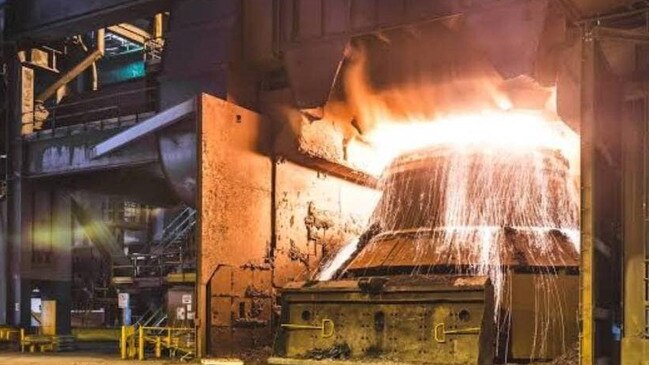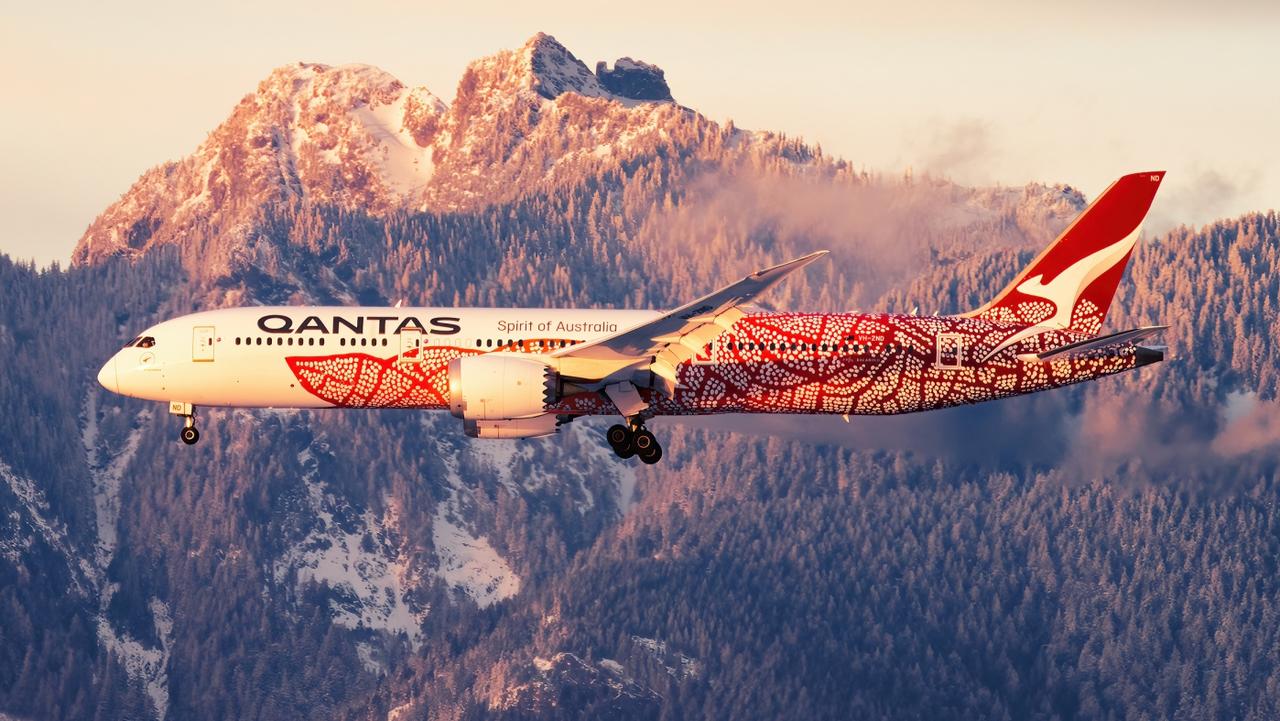Why trust is now at stake between business and the Prime Minister
CEOs felt they went the extra mile by investing up big for Australia, only to be ambushed on industrial relations.

Business
Don't miss out on the headlines from Business. Followed categories will be added to My News.
The Prime Minister says business and his government are on the same page in many areas, however on the issues that count there’s a mountain of white space.
Business is pragmatic enough to work with anyone who is in charge of policy and financial settings in Canberra, however for the most part the biggest employers in the land have a trust issue after many still feel as if they were ambushed by Albanese’s costly industrial policy settings pushed through last year.
CEOs believed they had shown the Albanese government goodwill by going the extra mile over pay rises, jobs growth and investment, particularly through supporting growth in the economy through the pandemic.
However, new rules increasing regulation around casual labour and Same Job, Same Pay for contractors was a big step back in productivity. This, business argues, ultimately hurts the ability for Australian companies to compete globally.

BHP has said the policy that puts contractors on the same conditions could cost up to $US1bn ($1.5bn) in additional wages. While not directly tying the industrial relations rules to the collapse of the Australian nickel industry, BHP boss Mike Henry has said they will be an additional aggravation as the sector attempts to trade out of its down cycle.
Other miners such as South32 and Whitehaven are starting to count the cost of the new IR rules to come in from November. Wesfarmers has called out the higher price of doing business which is hurting inflation, while Qantas has warned on an immediate $50m hit to its wages bill, particularly for international flights – right where the market is the most competitive.
Albanese stepped into the lion’s den at the annual Business Council of Australia Dinner in Sydney on Tuesday night. He avoided tackling industrial relations issues directly, but said where there are differences with his government there are more areas of common agreement. This ranges on energy, skills, training, trade liberalisation and infrastructure.
The Labor leader said it could be possible to be “proudly pro-business and pro-worker” at the same time. “We understand secure jobs and fair wages depend on thriving businesses, just as we know productivity gains depend on skilled workers and safe workplaces,” he said.
He also reminded the room his government had “stood against some pretty extreme anti-business policies put forward by members of the crossbench, and perhaps more surprisingly, by the opposition”.

While he wasn’t specific, the past 12 months has seen regular demands in Canberra for the big supermarkets to be broken up. This has been followed by calls to break up big hardware, and more recently an opposition thought bubble to break-up Qantas and Jetstar.
BCA chief Bran Black said in his opening remarks that his feedback from members was that they were now far more cautious about hiring after the government’s workplace changes. That’s yet another headwind going into a slowing labour market.
“This underlines the point that for a good job to be well-paid, it has to exist first,” Black says.
At the heart of the government’s workplace changes is Australia’s declining productivity, which as it slows pulls down living standards for all. There is little, if anything, in the IR changes that is going to drive productivity.

Wesfarmers’ boss Rob Scott says his business has been working hard and investing to try to be more productive and more efficient: “But to be frank, the forces at play within the broader economy are working against that.”
BHP’s Mike Henry has been a vocal critic of the Same Job, Same Pay changes in particular. “We’ve always been strong advocates for tying wage increases to productivity increases. Our concerns are that they flow straight through the cost with no commensurate positive impact on productivity,” he says.
All this comes as Deutsche Bank’s chief economist for Australia, Phil Odonaghoe, argues Australia’s unemployment rate is much lower than it should be given the propensity of “labour hoarding”.
Most of the slowdown in labour demand over the past year has occurred through weaker growth in hours worked rather than weaker growth in employment. Odonaghoe says the current cycle has at least another nine months of labour hoarding left.
With the economy clearly slowing, that means the big job cuts will come in time for a mid-year election if Albanese waits long enough.
Emissions warning
BlueScope Steel has revealed an indicative plan on how it expects its giant Port Kembla steelworks to get to net zero emissions by 2050 which involves embracing gas, while warning green hydrogen is unlikely to be commercially ready until late in the timeline.
Remarkably, the steelmaking company has already largely hit its 2030 steelmaking targets by cutting carbon emissions 12 per cent from its baseline of 2018.
However, targets from non-steelmaking activity such as metal coating and painting lines using high-temperature processes are proving harder to meet, falling just 8 per cent versus an end-of-decade target of 30 per cent reduction. BlueScope is still confident of getting there as well as its overall 2050 targets.

Chief executive Mark Vassella takes the challenge of cutting carbon emissions seriously, but among Australian business leaders is a realist. He is honest about the challenge and is prepared to back proven technology while still committing to an economic return for his shareholders.
BlueScope’s second Climate Action Report – the first was released three years ago – shows how Australian companies are evolving their approach in cutting emissions after being forced to confront the limitations of the energy grid and uncertain public policy while no longer blindly embracing technology.
For BlueScope this means embracing a gas-based solution until late into next decade, until the significant challenges of producing green hydrogen – namely the energy intensity – can be overcome.
The indicative road map released by Vassella to get his big coal-fired Port Kembla facility to net zero by 2050 still involves a number of big unknowns. It also introduces the use of carbon credits to abate the difficult final mile of emission reduction.
The challenges are immense, however “this is not a reason for inaction”, BluesScope says.
Vassella sees Port Kembla’s net zero path underpinned by five “enablers” – evolution of known technology: raw materials supply; access to firmed renewable energy; natural gas providing the bridge to green hydrogen; supportive and stable public policies.

The biggest bet on this is Project IronFlame. A joint study BlueScope has under way, with BHP and Rio Tinto, in direct reduced iron, which is essentially the process of making iron pellets or lumps using natural gas.
This can then be processed into steel using an electric arc furnace, stripping out the need for a coal-fired blast furnace. This known technology reduces emissions by up to 60 per cent and the process can easily transition from using natural gas to green hydrogen or even a blend when hydrogen becomes viable.
BlueScope points out, even with substantial investment, green hydrogen is not yet cost-effective or available at required volumes. Until that point – possibly close to 2040 – natural gas offers “an available pathway to significantly lowering ironmaking emissions without delay”.
Still, the infrastructure needed to get there is the next challenge.
Operating a DRI production facility with output similar to Port Kembla Steelworks would require 30 to 40 petajoules of natural gas per year, equivalent to 7 per cent of natural gas demand on the Australian east coast and some 40 times Port Kembla’s current gas use. Getting a supply of gas on the east coast is the most immediate challenge.
Electricity demand will also increase substantially with gas and will consume indicatively between 1.7TWh to 2.6TWh per year of electricity, then between 10TWh to 13TWh per year once transitioned to green hydrogen – similar to South Australia’s total electricity use.
This would require a complete overhaul of the Illawarra region’s electricity transmission network.
It is little wonder the entire global steel and energy value chains, investors, governments and the community will all need to be on the same page.
Much of BlueScope’s current cuts to steelmaking emissions have come from operations outside Australia. Greater output from its efficient North Star plant in the US is lowering emissions, following an expansion at the site using an electric arc furnace. It too is plugging into a green US power grid.
BlueScope has also mapped its total emissions and, significantly, 54 per cent are so-called Scope 3, which come from outside its direct activities – rather they are generated by suppliers and customers.
The majority of these emissions come from the extraction, processing and production of raw materials, and the use and processing of our sold products such as coke sales.
The largest Scope 3 contributor is emissions from the iron and steel we purchase in the regions where BlueScope doesn’t manufacture steel itself. And this is the next piece of BlueScope’s very complex puzzle.
johnstone@theaustralian.com.au
Originally published as Why trust is now at stake between business and the Prime Minister





